We had a great session today working together with the Kongali Community Library Maths Camp on modulo arithmetic.
Here are the slides (as a pdf), the 1st and 2nd explorations and a fantastic geogebra app.
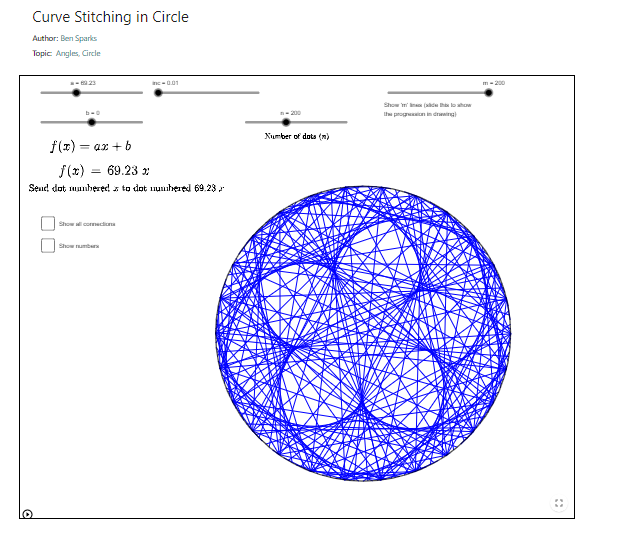
We had a great session today working together with the Kongali Community Library Maths Camp on modulo arithmetic.
Here are the slides (as a pdf), the 1st and 2nd explorations and a fantastic geogebra app.

Challenge
Can you draw this curve smoothly using only a straight edge and a pencil?
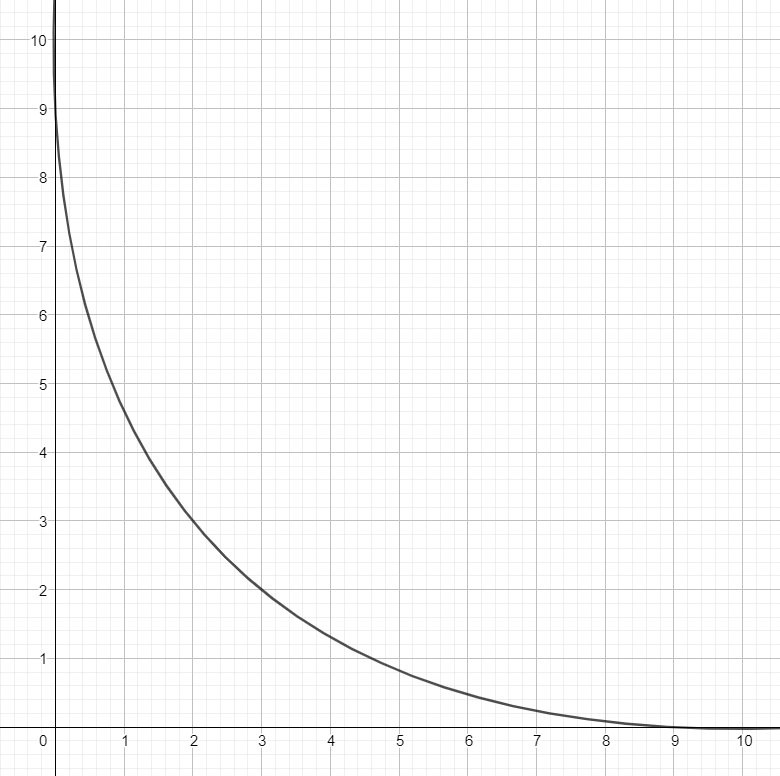
You can do it by continuing this pattern:
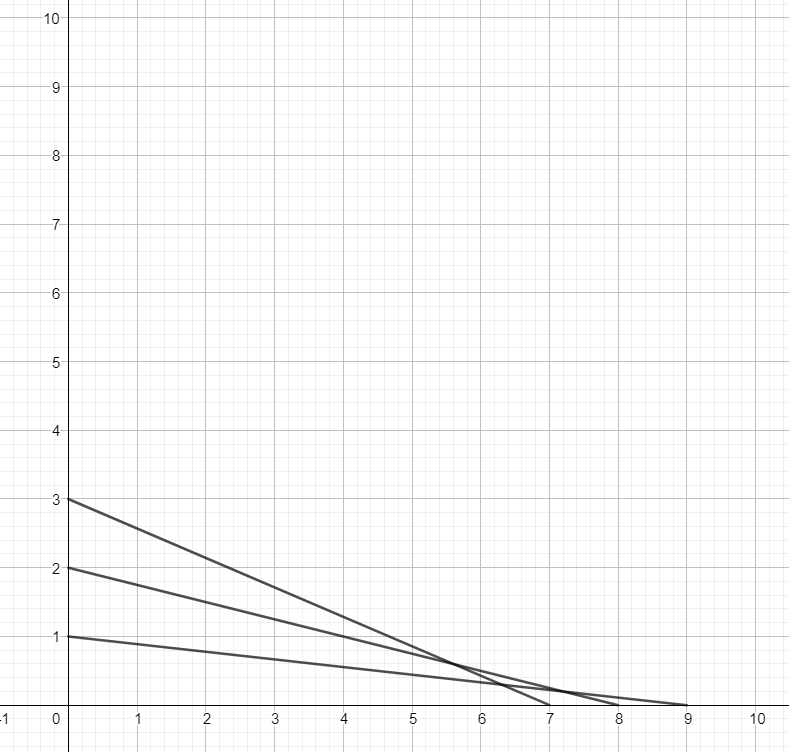
You could try it on Python from this starting point. Note that the co-ordinates are not correct for the first segment yet!
You could even try to do it in all four quadrants:
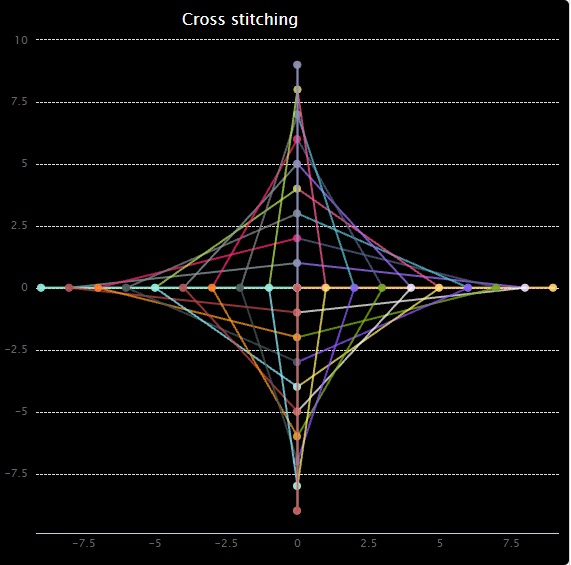
Or at an angle:
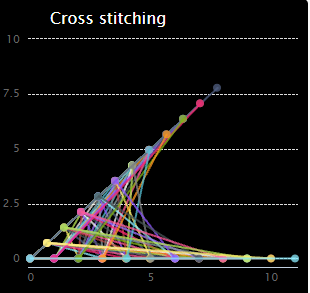
There is an ancient art called cross stitching that uses these ideas. Instead of stitching, we could make Christmas cards for the Bazar de Noël using Python and a 3D printer … let me know your designs at [email protected]

Welcome back to Maths Club! We are so happy to be able to get together again in person.
Today we tried this puzzle from the SAMI VMC playing card deck
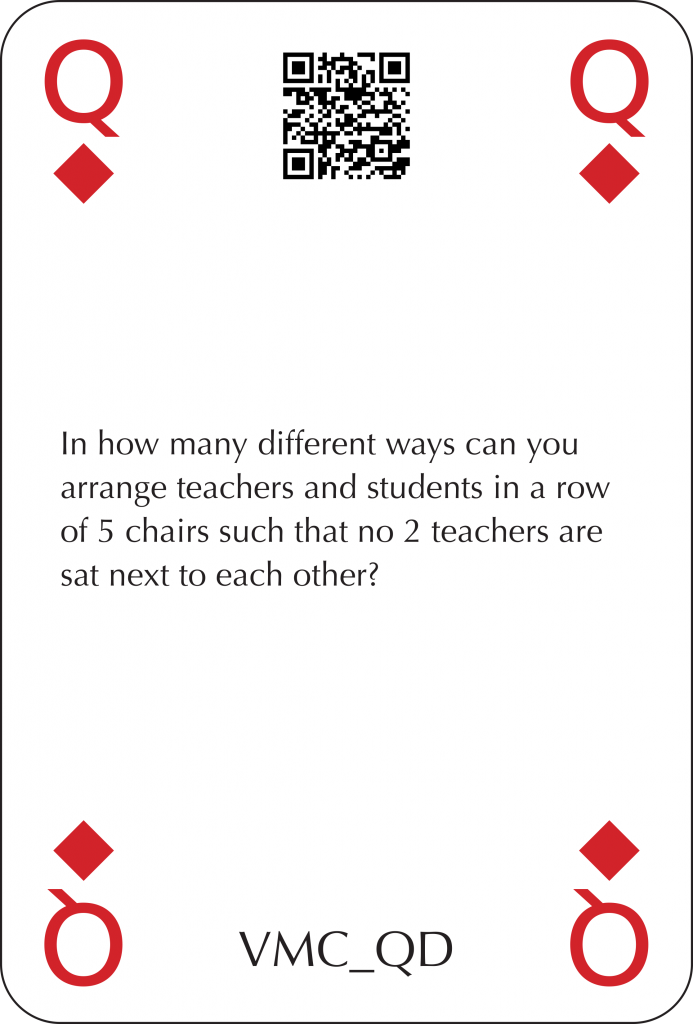
For a hint, the solution and extensions see here.
In these problems, which we learnt about from Maths Pickle, you will see some shapes made out of hexagons.
It might look something like one of these:
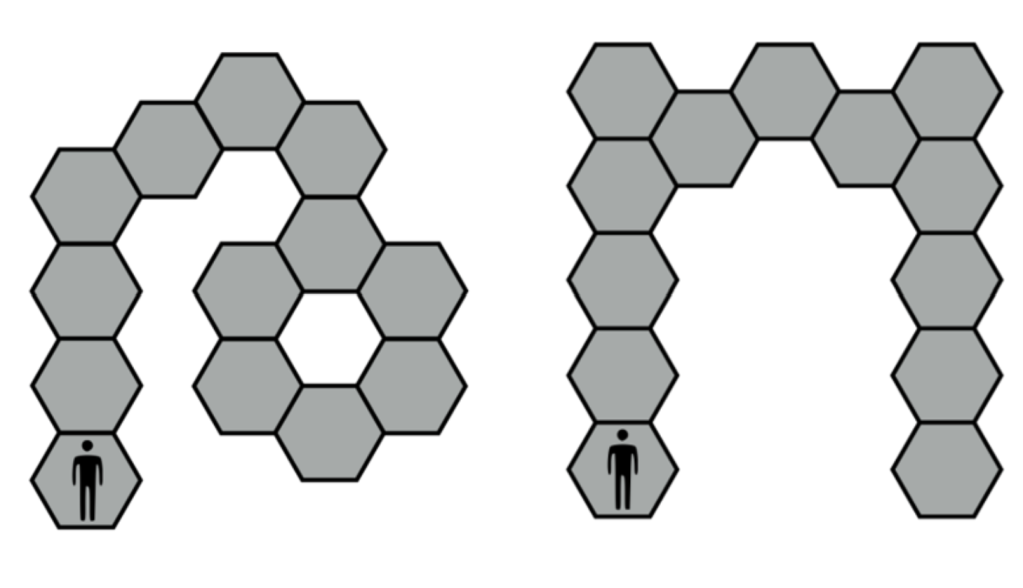
And we’re basically going to try to fill in each of the hexagons in one of three colours (red, orange or green).
Green means that from the starting point you can ALWAYS pass through all the hexagons (no matter what path you take). You can’t go back on yourself though.
Orange means that SOMETIMES you can pass through all the hexagons and other times you can’t (it depends on the path you take)
Red means that you can NEVER pass through all of the hexagons no matter what path you take.
Let’s look at an example:
Take this shape here:
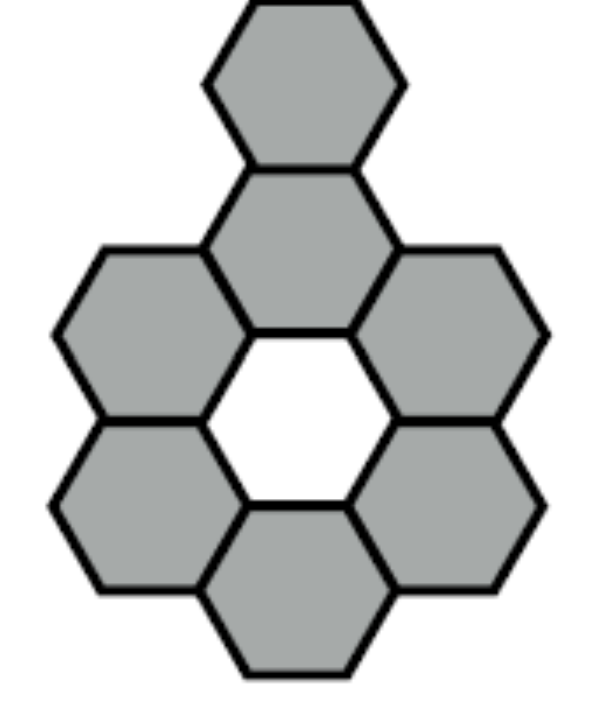
If we start from the this hexagon:
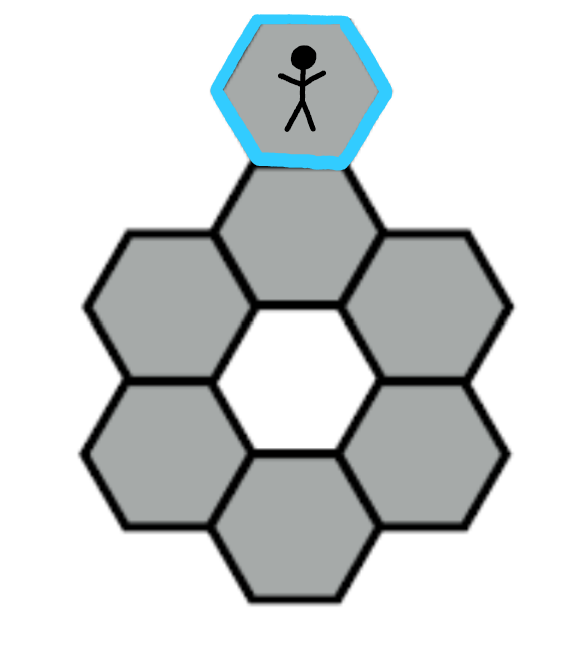
We have two options of paths:
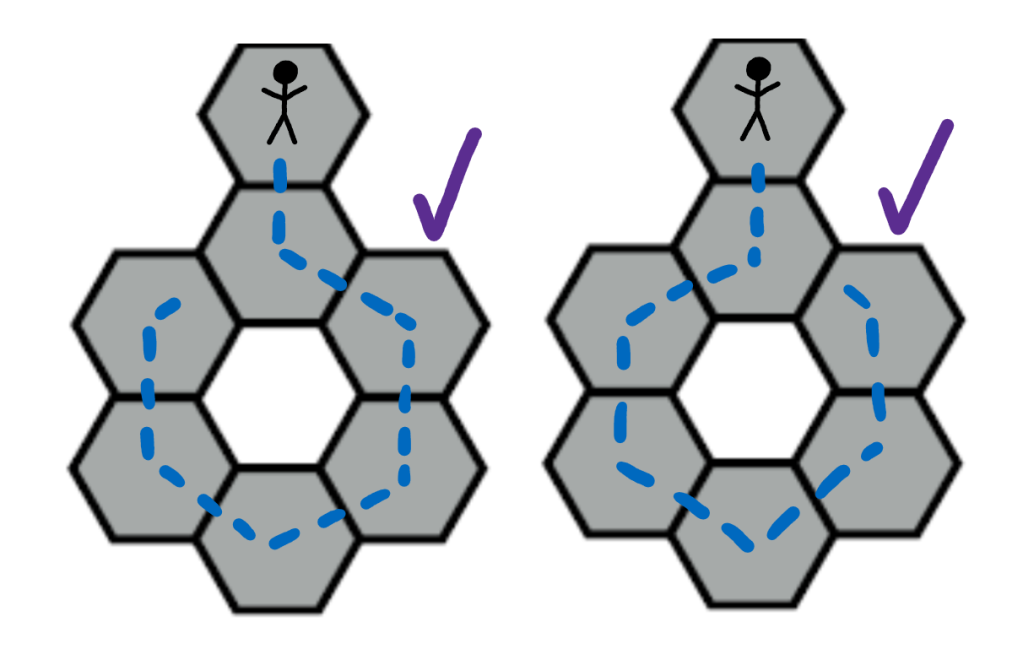
As you can see both paths pass through all the hexagons.
This means the top square is green:

Taking the same example. But starting from this hexagon:

There are 4 options of paths to take:
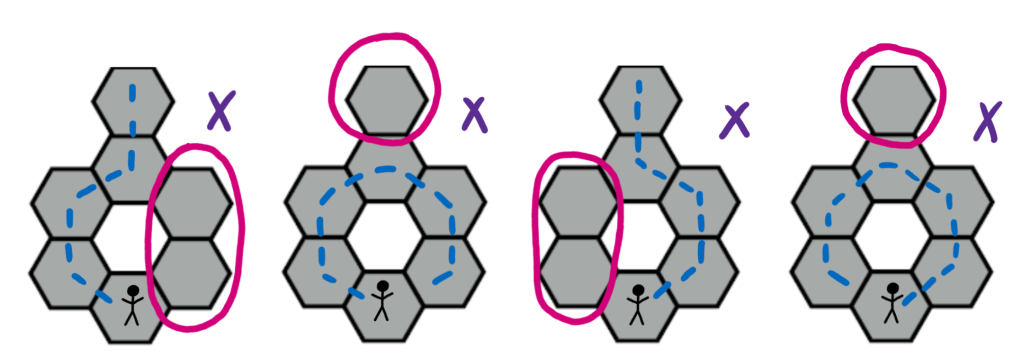
None of these paths pass through all the hexagons.
So the hexagon is red.
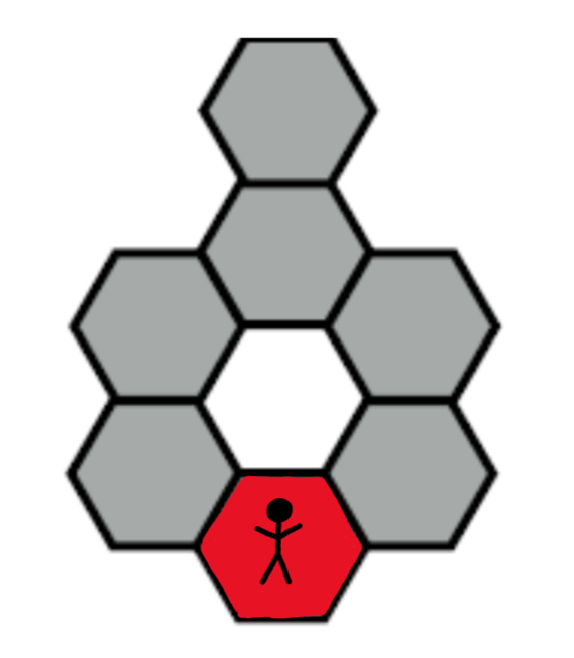
Finally if we start from this hexagon:
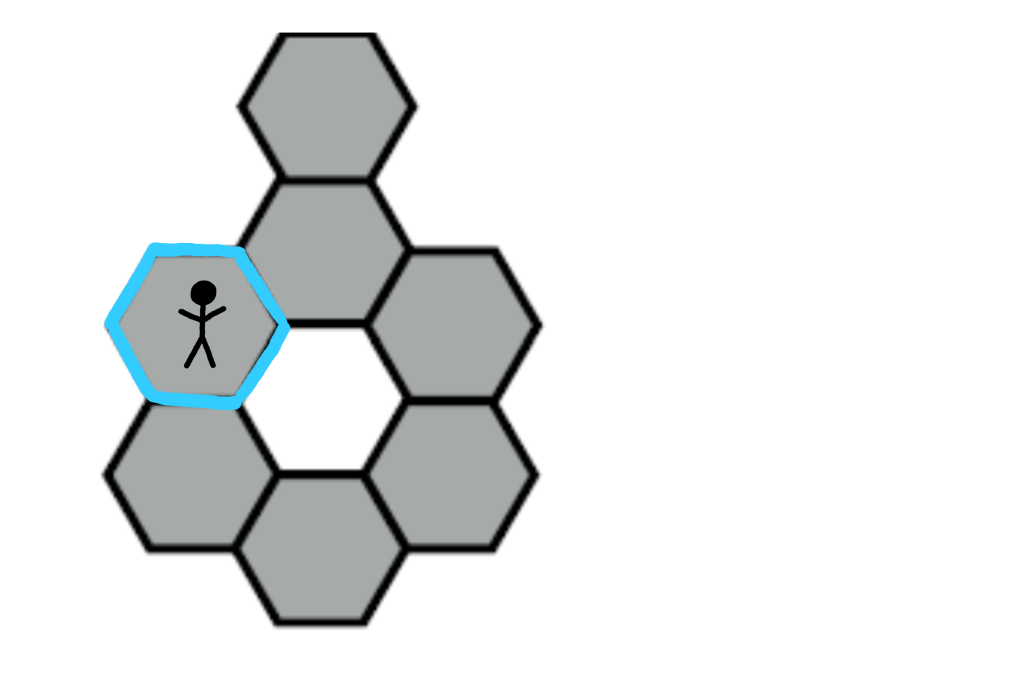
We have 3 options of paths:
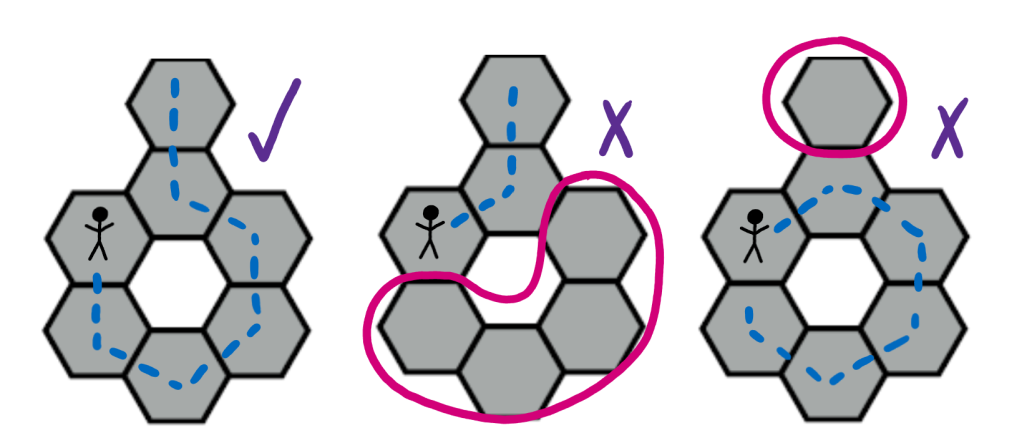
Here some of the paths pass through all the hexagons and others don’t.
This means the hexagon is orange.
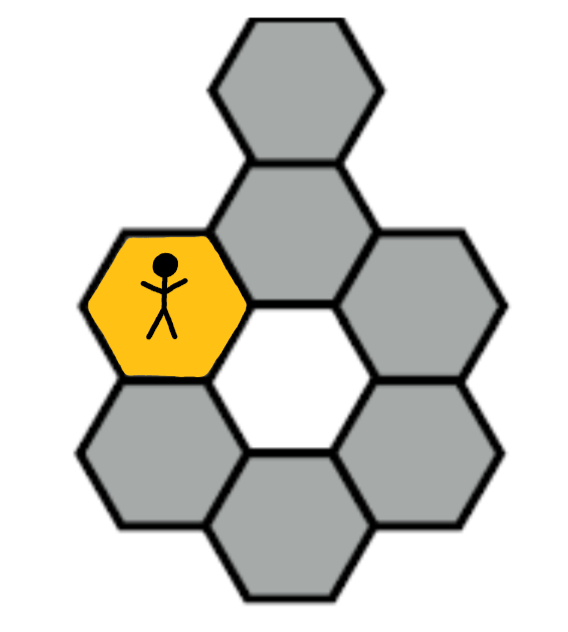
For the moment our shape looks like ths:
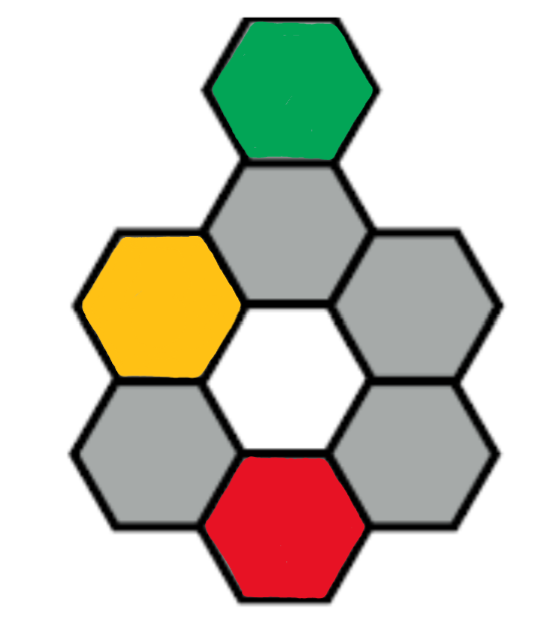
We want to fill each hexagon in in either red, orange or green.
Now try some of these ones to test your understanding!
Example 1:
Example 2:
Example 3:
Example 4:
Select the 16 Jacks, Queens, Kings and Aces from a pack of cards. Try to put them in a 4 by 4 square so that each rank (J, Q, K, A) and each suit (Clubs, Diamonds, Hearts, Spades) appears only once in each row and column.
This puzzle is an example of a Latin square. Latin squares are used in medical trials to ensure every participant is allocated to each treatment for the same time period to prove which is the best treatment. See these links for some more info – mathsisfun, wikipedia and nrich.
We are really missing having maths club in person, and we missed the maths camps in Africa in the summer … but we are so happy that circumstances have meant the launch of the Virtual Maths Camp. The puzzle above is going to appear on the 6 of spades in our card deck! Please check out the idea behind our maths club app which can be accessed online here. We are very keen to translate our activities into French so that they can be used in countries like Togo. If you would like to help with translation, please get in touch with Emily Fleming at [email protected].
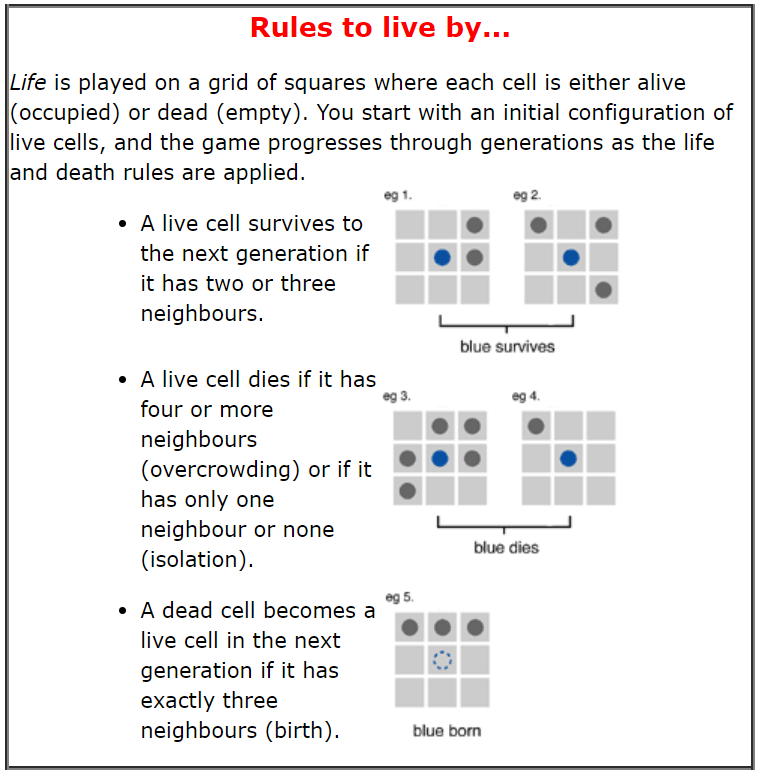
Go to this https://bitstorm.org/gameoflife/ and colour in a 2 by 2 square on the screen like this:

Press start. Nothing should happen to the square. Why?
Well, because each yellow square has exactly 3 neighbours so all survive. There are no other cells that have exactly 3 neighbours so no new cells are born.
Now try with a three by three cell:
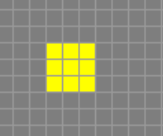
Press start. What happens?
Try to work out on paper what you think would happen for a 4 x 4 shape.
Then test your answer.
How about 5 x 5, 6 x 6 and 7 x 7?
Have a play around and see what fun patterns you can make.
You might like to read the article from Plus Maths or even try this question from the 1996 British Informatics Olympiad.
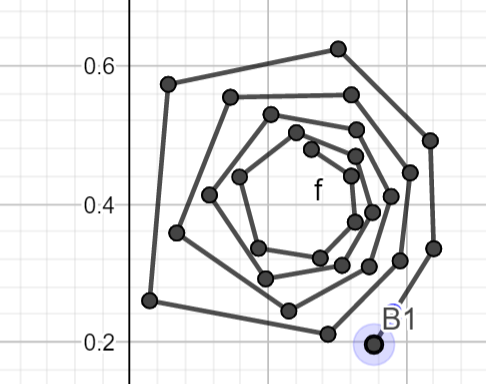
Here are some instructions to try to understand this fascinating set of numbers.
Try the tasks on pen and paper Geogebra, and then watch the video by Ben Sparks …
Two amazing videos to share with you this week from Tadashi Tokieda. Try them out at home!!
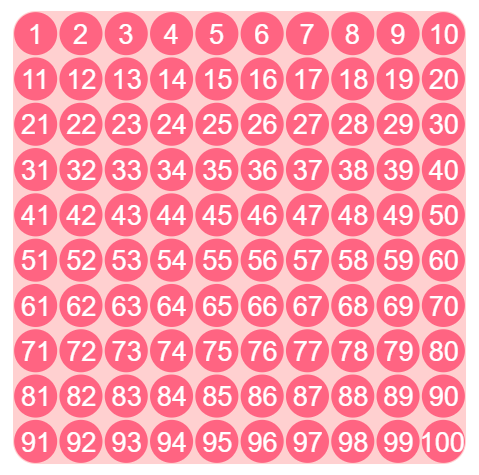
Today we worked on this lovely puzzle from Nrich.
Choose a starting number from a 1-100 square and cross it out.
Then choose a factor or multiple of that number.
Keep crossing out factors or multiples of the last number in the chain.
For example, Charlie started with 60, 30, 6, 96, 16, 32, 8, 56, 7, 21, 42,…
What’s the longest chain you can make?
There is an interactive place to play here
When you are using the activity make sure you only have a bracket at the start and the end … this attempt isn’t quite right:
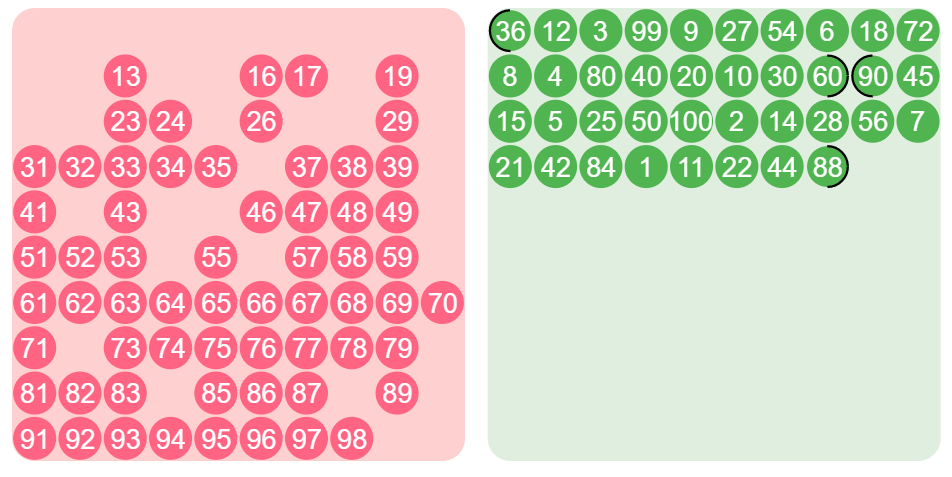
But it can be fixed by swapping the 60,90,45 and 15 around:
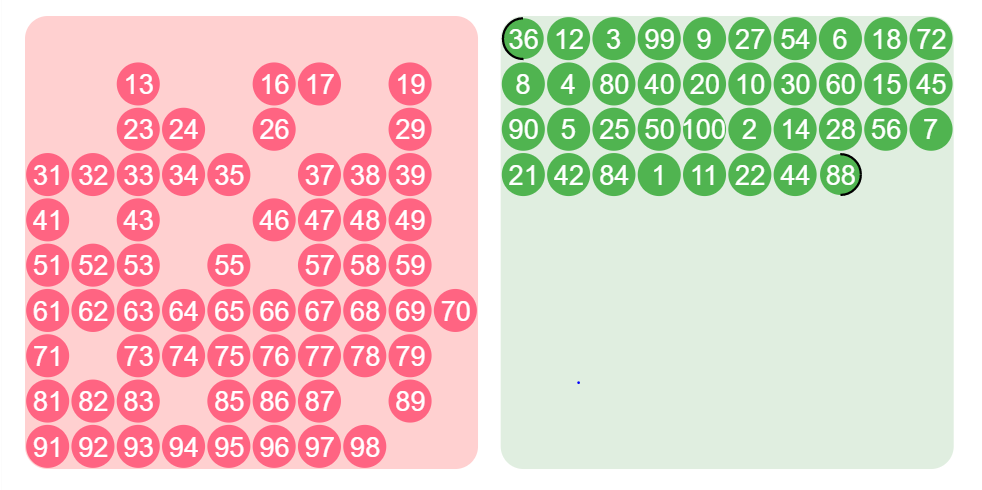
Email Mrs Fleming on [email protected] if you can do better than 38 steps …
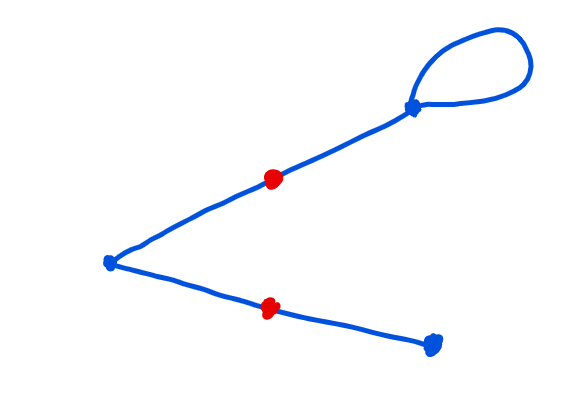
In honour of John H. Conway, today we present a game that he co-invented with Michael S. Paterson while they were both at Cambridge.
It is called Sprouts, and the rules are summarised by Nrich here.
Anyone can play, so find someone in your house and play a few games, then try and discover some of the maths behind it by working through this article.